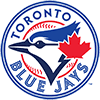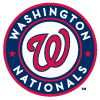This article is part of our Baseball Draft Kit series.
Every year, there are several discounted players that carry fantasy owners to league championships. Just as connecting on huge sources of profit is important to a successful season, avoiding significant losses with draft-day investments due to missed time and sharp declines in production due to injury is imperative.
Jacoby Ellsbury, OF 
The former All-Star and member of the 30-30 club has seen his productivity slowly dip since signing his seven-year, $153 million deal with the Yankees. Injuries, especially those to his lower extremities, have been a major contributing factor to his decline. The 33-year-old has suffered a multitude of lower body issues in his three seasons in pinstripes, including a bone contusion and sprain to his right knee, strains to his right hip, hamstring and calf, and a left ankle sprain. These ailments, especially the muscle injuries, are particularly limiting for a player reliant on speed and acceleration. Furthermore, multiple injuries along one specific kinetic chain can elevate an individual's inherent injury risk.
The body is an interconnected arrangement of segments working in unison to carry out desired actions. If an injury occurs somewhere along the sequence, the other components are affected. Much like the links in an iron chain, if one of the joints along a kinetic chain becomes weakened or is improperly functioning, the strength and ability of the entire extremity is compromised as the other links undergo a compensational shift to withstand the change. Even if the shift is subtle, it can be enough to increase
Every year, there are several discounted players that carry fantasy owners to league championships. Just as connecting on huge sources of profit is important to a successful season, avoiding significant losses with draft-day investments due to missed time and sharp declines in production due to injury is imperative.
Jacoby Ellsbury, OF 
The former All-Star and member of the 30-30 club has seen his productivity slowly dip since signing his seven-year, $153 million deal with the Yankees. Injuries, especially those to his lower extremities, have been a major contributing factor to his decline. The 33-year-old has suffered a multitude of lower body issues in his three seasons in pinstripes, including a bone contusion and sprain to his right knee, strains to his right hip, hamstring and calf, and a left ankle sprain. These ailments, especially the muscle injuries, are particularly limiting for a player reliant on speed and acceleration. Furthermore, multiple injuries along one specific kinetic chain can elevate an individual's inherent injury risk.
The body is an interconnected arrangement of segments working in unison to carry out desired actions. If an injury occurs somewhere along the sequence, the other components are affected. Much like the links in an iron chain, if one of the joints along a kinetic chain becomes weakened or is improperly functioning, the strength and ability of the entire extremity is compromised as the other links undergo a compensational shift to withstand the change. Even if the shift is subtle, it can be enough to increase the odds of another injury occurring to the muscles or ligaments along the chain. Ellsbury's injury history and steadily declining numbers present too many red flags for fantasy owners to ignore on draft day.
When the Marlins signed Stanton to the most lucrative contract in professional sports prior to the 2015 season, the team likely anticipated he would play more than just 60 percent of Miami's games moving forward. However, that hasn't been the case as injuries have forced Stanton off the field far too frequently. In 2013, he missed an extended amount of time with a moderate hamstring strain. The following year Stanton's season prematurely ended after a stray fastball resulted in multiple facial fractures, dental damage and a facial laceration that required stitches. In 2015, Stanton's recovery from midseason surgery to repair a broken hamate bone in his hand was delayed by an abnormal amount of scar tissue. Last year, a severe groin strain cost him 22 games late in the season before he returned in a limited capacity in September.
While Stanton's ailments are not interconnected like Ellsbury's, he's still shown a propensity for injury that makes him a risky play in fantasy. Stanton will carry a hefty price tag on draft day and it may be more prudent to invest that draft pick (or those auction dollars) in a player that has averaged more than 113.5 games played over the past four years.
Troy Tulowitzki, SS 
While Tulowitzki is a five-time All-Star, two-time Silver Slugger winner, and plays a position lacking fantasy depth, a lengthy list of injuries make it difficult to make him a cornerstone of a fantasy infield. Since the 2005 season, Tulowitzki has dealt with contusions to his hand, forearm, elbow and lower legs. He's suffered multiple muscle-related injuries including strains of his rotator cuff, back, oblique and groin, as well as a torn quadriceps tendon. He missed 13 games after slicing his hand while smashing a bat in frustration and has broken a variety of bones including the hamate bone in his wrist, ribs, shoulder blade and thumb. If this list wasn't already dubious enough, the 32-year-old has also required surgery to fix a torn labrum in his left hip and another operation to remove scar tissue impeding on a nerve in his groin.
The sheer volume of injuries is worrisome alone, and it's the primary reason why Tulowitzki has played over 150 games just twice in his 11-year career. Avoid the potential problems here and opt for one of the younger shortstops that have garnered attention league wide.
Strasburg is the ultimate high-risk, high-reward pitcher. When healthy, he is capable of dominating like he did last season when he started the year 13-0 with a 2.51 ERA. However, like in years past, injuries derailed his season and prevented him from finishing the season. It started with mild calf and upper back strains in June before a partial tear of his flexor-pronator tendon in his throwing elbow ultimately ended his season. This marked the second consecutive season in which a lower extremity injury preceded a neck and back injury that then cascaded down to Strasburg's pitching arm.
Last year's problem were more worrisome than those in 2015 as the flexor-pronator mass works directly with the ulnar collateral ligament (UCL), the ligament Strasburg had repaired with Tommy John surgery in 2010. The UCL and the flexor bundle both anchor to the medial epicondyle of the humerus, the bone of the upper arm, and act synergistically to aid in elbow stability. If one is weakened or loose, the other stabilizer takes on the additional load while making itself susceptible to injury in the process. That would be a major concern for a player who has previously suffered a torn UCL.
Strasburg believes his over-reliance on his slider, a pitch commonly linked to elbow injuries, attributed to last season's issues. Problems with his mechanics have also been discussed and could easily be another contributing factor in Strasburg's inability to stay healthy. Don't allow his flashes of brilliance to overshadow the multiple warning signs here, and let someone else gamble on the right-hander.
Steven Matz, SP 
Injuries ravaged the Mets' rotation last season with multiple players spending extended time on the disabled list. Matz's problems first surfaced in May when he missed a start due to forearm soreness. The left-hander appeared to be OK after his brief absence, but pain and tightness in his elbow lingered. An MRI performed revealed a significant bone spur was the root of the problem. He attempted to pitch through the issue, but suffered a muscle strain in his shoulder, before ultimately deciding to proceed with an elbow debridement to remove the still problematic bone spur.
The development of bone spurs, also known as osteophytes, is often linked to a pitcher's delivery. When a pitch is repetitively thrown, the elbow is stressed and friction between joint surfaces occurs. If bone tissue is involved, the body will respond to the continual stress by laying down new bone tissue and forming an osteophyte. The newly developed bone spur will then often act like a wedge, restricting range of motion at the area and irritating the neighboring soft tissue. Surgical excision is the easiest way to address the problem, but if the same repetitive force is resumed the osteophyte may simply reform over time.
Additionally, Matz's injury history, which includes Tommy John surgery in 2010 and a torn latissimus dorsi in 2015, has to be taken into consideration. These injuries all hint at an issue with his mechanics and fantasy owners should respond by adjusting their draft boards accordingly.
Matz's teammate, Noah Syndergaard, also battled a bone spur for most of 2016 though he did not undergo surgery on the area. He will likely be drafted a bit higher than he probably should be, but his upside his hard to ignore. Two other Mets starters, Jacob deGrom (ulnar nerve surgery) and Matt Harvey (thoracic outlet surgery), are also precarious selections though their average draft position is likely to be more in line with their inherent level of risk.
Gerrit Cole, SP 
Like discussed with Ellsbury, the relationship between each segment of the body is important when examining injuries and the level of associated risk with a player. The kinetic chain of the upper extremities acts just like the legs with each portion responding to any limitation in another area. For pitchers, this often occurs in a cascade manner as a shoulder injury to the throwing arm leads to an elbow or wrist problem over time.
Cole's injury concerns started in 2014 when he was given time off for "shoulder fatigue." Shortly thereafter he was sidelined by tightness in his latissimus dorsi, a muscle that plays a role in motions of both the back and shoulder. His breakout season in 2015 was fueled by a stretch of good health, but the injuries resurfaced last year. He entered spring training hampered by inflammation in the ribs on his throwing side, and then struggled to ever find his footing before a right triceps strain sent him to the DL for over a month. Six weeks later, Cole was back in the athletic training room with posterior elbow inflammation. An attempted return in mid-September lasted just two innings before the Pirates shut him down for the season. An MRI taken at the time found no ligament damage and speculation of a bone spur was never verified. The inflammation could be linked to the previous triceps problem, but that has never been publicly confirmed.
As he has for his whole career, Cole avoided surgery on the problem and resumed throwing in December. Someone will be willing to overpay hoping that Cole can bounce back, but trusting in his durability without knowing what exactly led to his elbow woes is a gamble.
This article appears in the 2017 RotoWire Fantasy Baseball Guide. You can order a copy here.












